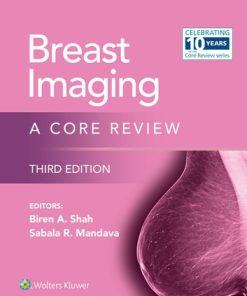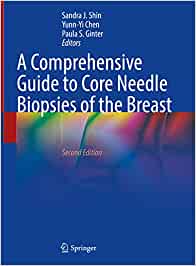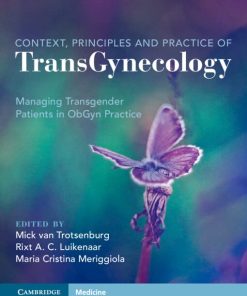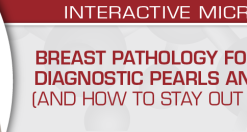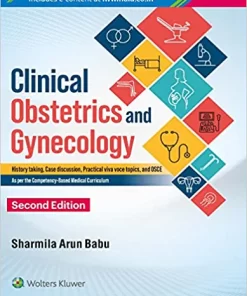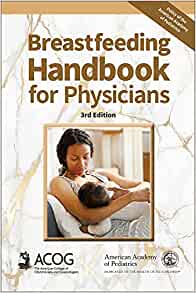Unlock the Secrets of General Obstetrics with This Comprehensive Guide
Discover the Benefits of General Obstetrics with this Book!
Are you looking for a comprehensive guide to general obstetrics? Look no further than this book! It provides an in-depth look at the field, covering topics such as prenatal care, labor and delivery, postpartum care, and more. With its easy-to-understand language and helpful illustrations, this book is perfect for medical professionals and students alike. Plus, it includes up-to-date information on the latest advances in the field. Get your copy today and start learning about general obstetrics! Click here to purchase your copy now!
GENERAL OBSTETRICS
GENERAL OBSTETRICS
Tumor Imaging: Breast Imaging Online Course 2022 (CME VIDEOS)
GENERAL OBSTETRICS
GENERAL OBSTETRICS
Davis Advantage for Maternal-Newborn Nursing Critical Components of Nursing Care, 4th Edition (EPUB)
GENERAL OBSTETRICS
Gabbe. Obstetricia: Embarazos normales y de riesgo, 8th Edition (EPUB)
GENERAL OBSTETRICS
GENERAL OBSTETRICS
Textbook of Female Urology and Urogynecology, 3rd Edition (ORIGINAL PDF from Publisher)
GENERAL OBSTETRICS
GENERAL OBSTETRICS
Evidence-Based Care for Midwives (Original PDF from Publisher)
GENERAL OBSTETRICS
GENERAL OBSTETRICS
Practising Feminism for Social Welfare (Original PDF from Publisher)
GENERAL OBSTETRICS
Perspectives on Midwifery and Parenthood (Original PDF from Publisher)
GENERAL OBSTETRICS
GENERAL OBSTETRICS
Textbook of Human Reproductive Genetics, 2nd Edition (Original PDF from Publisher)
GENERAL OBSTETRICS
GENERAL OBSTETRICS
Speroff ’s Clinical Gynecologic Endocrinology and Infertility, SAE (Original PDF from Publisher)
GENERAL OBSTETRICS
GENERAL OBSTETRICS
Introduction
This comprehensive guide to general obstetrics unlocks the secrets of this important medical field. It provides a detailed overview of the various aspects of obstetrics, from prenatal care and labor to postpartum care and newborn care. With this guide, you can gain a better understanding of the complexities of obstetrics and how to provide the best possible care for your patients. Learn about the latest developments in the field, as well as tips and tricks for providing quality care. Unlock the secrets of general obstetrics with this comprehensive guide!
Overview of General Obstetrics
General Obstetrics is a branch of medicine that focuses on the care of women during pregnancy, childbirth, and the postpartum period. It is a specialized field of medicine that requires extensive knowledge and experience in order to provide the best possible care for pregnant women and their babies.
General obstetricians are responsible for providing comprehensive care to pregnant women throughout their pregnancies. This includes monitoring the health of both mother and baby, providing education and counseling about nutrition, exercise, and lifestyle choices, and managing any medical conditions or complications that may arise. They also provide support and guidance to the family during labor and delivery, and help with the transition to parenthood after the baby is born.
General obstetricians must be knowledgeable about all aspects of pregnancy, labor, and delivery, including the latest advances in medical technology and treatments. They must be able to recognize and manage any potential risks or complications that may arise during pregnancy, labor, or delivery. They must also be able to provide emotional support and guidance to the family during this time.
General obstetricians must have excellent communication skills in order to effectively communicate with patients, families, and other healthcare providers. They must also be able to work as part of a team in order to provide the best possible care for their patients.
General obstetricians must stay up-to-date on the latest developments in the field in order to provide the best possible care for their patients. They must also be familiar with the laws and regulations governing the practice of obstetrics in their state or country.
General obstetricians play an important role in ensuring the health and safety of pregnant women and their babies. They provide comprehensive care throughout the entire pregnancy, labor, and delivery process, and help families make informed decisions about their care.
Anatomy and Physiology of the Female Reproductive System
The female reproductive system is a complex and intricate network of organs, hormones, and other components that work together to produce and transport eggs, receive sperm, and create an environment for fertilization and development of offspring. It is composed of both internal and external structures, including the uterus, ovaries, fallopian tubes, cervix, vagina, vulva, and mammary glands.
The uterus is a hollow, pear-shaped organ located in the lower abdomen between the bladder and rectum. It is made up of two layers: the inner lining, called the endometrium, and the outer layer, called the myometrium. The endometrium is where a fertilized egg implants and develops into a fetus. The myometrium is composed of muscle tissue and helps to contract during labor.
The ovaries are two small, almond-shaped organs located on either side of the uterus. They produce and store eggs, as well as hormones such as estrogen and progesterone. These hormones regulate the menstrual cycle and prepare the body for pregnancy.
The fallopian tubes are two thin tubes that connect the ovaries to the uterus. They carry the eggs from the ovaries to the uterus. If an egg is fertilized by a sperm, it will travel through the fallopian tube and implant in the uterus.
The cervix is the lower part of the uterus that opens into the vagina. It produces mucus that helps to protect the uterus from infection and also helps to guide sperm to the egg. During childbirth, the cervix dilates to allow the baby to pass through.
The vagina is a muscular canal that connects the uterus to the outside of the body. It is where menstrual blood exits the body and where a baby passes through during birth. It also serves as a pathway for sexual intercourse.
The vulva is the external genitalia of the female reproductive system. It includes the labia majora (outer lips), labia minora (inner lips), clitoris, urethra, and vaginal opening. The labia majora and labia minora protect the internal reproductive organs and provide lubrication during sexual intercourse. The clitoris is a sensitive area of tissue that can be stimulated to produce pleasure. The urethra is a tube that carries urine from the bladder to the outside of the body.
The mammary glands are located in the breasts and are responsible for producing milk after childbirth. They are composed of fatty tissue, glandular tissue, and ligaments.
The female reproductive system is a complex and delicate system that works together to produce and transport eggs, receive sperm, and create an environment for fertilization and development of offspring. It is essential for reproduction and maintaining the health of women.
Common Obstetric Procedures and Tests
Common obstetric procedures and tests are those that are routinely performed during pregnancy to ensure the health of both the mother and baby. These tests and procedures help to detect any potential problems or complications that may arise during the course of the pregnancy.
The most common obstetric procedure is an ultrasound. This test uses sound waves to create a picture of the baby in the womb. It can be used to determine the baby’s size, position, and gender. Ultrasounds can also detect any abnormalities in the baby’s development.
Another common obstetric procedure is amniocentesis. This test involves taking a sample of the amniotic fluid surrounding the baby in the womb. The sample is then tested for genetic disorders or other abnormalities. Amniocentesis is usually done between weeks 15 and 20 of the pregnancy.
Other common obstetric tests include blood tests, urine tests, and fetal monitoring. Blood tests are used to check for infections, anemia, and other conditions. Urine tests are used to check for protein, sugar, and bacteria in the urine. Fetal monitoring is used to measure the baby’s heart rate and movements.
Finally, there are several other tests and procedures that may be recommended by your doctor depending on your individual situation. These may include chorionic villus sampling (CVS), non-stress tests, and biophysical profiles. CVS is a test that takes a sample of cells from the placenta to check for chromosomal abnormalities. Non-stress tests measure the baby’s heart rate in response to movement. Biophysical profiles measure the baby’s breathing, muscle tone, and other factors.
Overall, these common obstetric procedures and tests are important for ensuring the health of both the mother and baby during pregnancy. They can help to detect any potential problems or complications that may arise during the course of the pregnancy. It is important to discuss any questions or concerns you have with your doctor before undergoing any of these tests.
Complications of Pregnancy and Delivery
Pregnancy and delivery are natural processes that the female body is designed to go through. However, there are a number of potential complications that can arise during pregnancy and delivery that can be dangerous for both mother and baby. It is important for pregnant women to be aware of these potential complications so they can take steps to reduce their risk.
One of the most common complications of pregnancy is preterm labor. This occurs when labor begins before the 37th week of pregnancy. Preterm labor can lead to premature birth, which can cause a variety of health problems for the baby. Other complications of pregnancy include gestational diabetes, preeclampsia, and placental abruption. Gestational diabetes is a type of diabetes that develops during pregnancy and can cause high blood sugar levels in the mother. Preeclampsia is a condition characterized by high blood pressure and protein in the urine. Placental abruption is a serious complication in which the placenta separates from the uterus before delivery.
During delivery, there are also a number of potential complications. These include shoulder dystocia, which occurs when the baby’s shoulder gets stuck in the birth canal. This can cause injury to the baby or the mother. Another complication is umbilical cord prolapse, which occurs when the umbilical cord slips out of the uterus before the baby. This can cause the baby to become deprived of oxygen. Other complications of delivery include postpartum hemorrhage, infection, and uterine rupture.
It is important for pregnant women to be aware of the potential complications of pregnancy and delivery so they can take steps to reduce their risk. Women should talk to their doctor about any concerns they have and follow their doctor’s advice. Regular prenatal care is essential for a healthy pregnancy and delivery.
Postpartum Care and Follow-up for Mothers and Babies
Postpartum care and follow-up for mothers and babies is an important part of the birthing process. It is essential to ensure that both mother and baby are healthy and thriving after the birth. Postpartum care includes physical, emotional, and psychological support for the mother and baby during the postpartum period.
Physical care for the mother includes monitoring her vital signs, checking for any signs of infection, and providing pain relief if needed. The mother should also be encouraged to rest and take time for herself. It is important to monitor the mother’s diet and nutrition to ensure she is getting enough nutrients to heal and recover from childbirth.
For the baby, postpartum care includes monitoring their growth and development, as well as providing immunizations and other preventive care. It is important to check for any signs of illness or infection, and to provide appropriate treatment if necessary. The baby should also be monitored for any signs of jaundice or dehydration.
Follow-up care for both mother and baby is also important. This includes regular visits to the doctor to monitor the mother’s recovery and the baby’s growth and development. During these visits, the doctor will assess the mother’s physical and emotional health, as well as the baby’s overall health. The doctor may also provide advice on breastfeeding, nutrition, and parenting.
Postpartum care and follow-up for mothers and babies is essential for ensuring a healthy and successful transition into parenthood. It is important to seek medical advice and support throughout the postpartum period to ensure the best possible outcome for both mother and baby.
Conclusion
This comprehensive guide to general obstetrics provides a wealth of information and resources to help you unlock the secrets of this important field. With its detailed explanations, helpful diagrams, and useful tips, this guide is an invaluable resource for anyone looking to gain a better understanding of obstetrics. Whether you are a medical professional or simply interested in learning more about this fascinating subject, this guide will provide you with the knowledge and tools you need to succeed.

